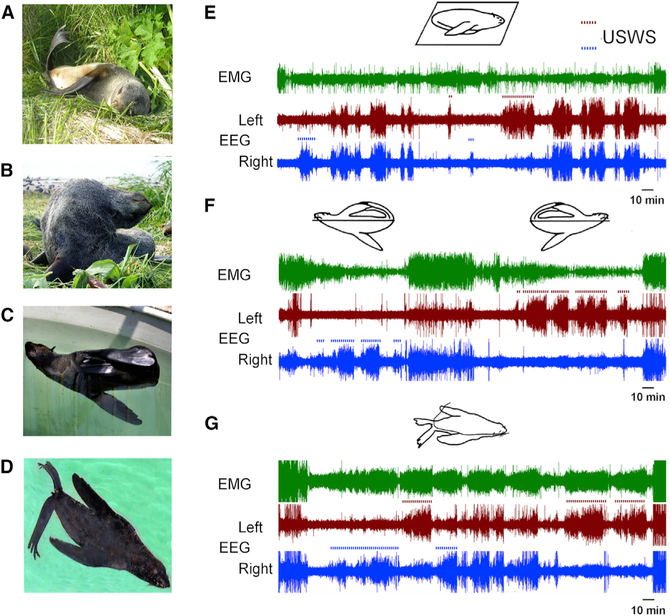Figure 1. Sleep in Fur Seals.
(A and B) Sleep on land while lying (A) and sitting (B).
(C and D) Sleep in seawater at the surface in the lateral (C) and in a prone (D) position.
(E–G) Periods of sleep and wakefulness on land and in the lateral and prone positions as shown by EEG of the two cerebral hemispheres and neck electromyogram (EMG). Brown dotted lines indicate left unihemispheric slow-wave sleep (USWS), and blue dotted lines indicate right USWS. The drawings above each panel indicate the predominant fur seal posture during the recording. (E) shows the predominant posture while sleeping on land with relatively little EEG asymmetry. (F) illustrates the most common posture of sleep in the fur seal in water. The initial posture, with the right front flipper moving in the water, is asssoicated with right USWS, and the second posture, with the left front flipper moving in the water, is associated with left USWS. (G) illustrates a prone posture in water, which is less common, as the fur seals begins sleeping in right USWS, then left, then right then left again without changing the position. The photo in (D) and polygrams in (E)–(G) are from [8].

